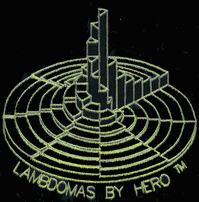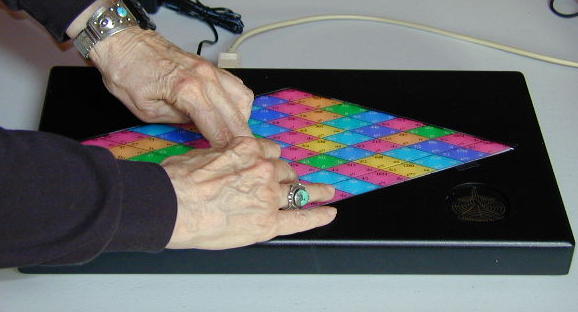Lambdoma-Related Research by Barbara Hero
TRANSLATIONS ~ English to: 
Please read and agree to the copyright attribution requirements at the bottom of this page before utilizing any of this information in your own works. ヅ
~ Additional materials are linked on the Articles page of this site ~
Plato's Lambdoma pdf
The Lambdoma Keyboard: Applying and Experiencing Mathematics
32-page powerpoint (.ppt) presentation Barbara Hero presented at the Fourth International Conference of Applied Mathematics and Computing, August 12-18, 2007, in Plovdiv, Bulgaria.
Download all the following articles as an Adobe Reader (.pdf) file, 15 pages, 465 kb.
The Music of Foods, Glands, Colors, Minerals and Vitamins.
This chart illustrates that a database of harmonic musical frequencies and notations may be formed that relates many seemingly diverse phenomena. It reveals the musical relationship of foods to the spinal column, glands, minerals and vitamins. By observing these musical relationships and eating the corresponding foods, a harmonic state of being might be induced.
The Hindu Cosmological Number
The Hindu cosmological number 18,446,744,073,709,551,615 when translated into a musical frequency (by taking 10 to the 19th power) results in a frequency of 555.1115123 Hz, a C# in Western notation. This frequency is interesting because it describes the rotation of the earth around the sun, as well as the average clustering of the four DNA strands when coded to a musical language.
After taking 10 to the 19th power through 10 to the 30th power, we found an interesting pattern of that same number 5551115123 with decimals in different placements leading to different musical notations for each. Note that 2 to the 64th power leads to the same Hindu number above and is 256 Hz, a bit below middle C on the piano.
Isotope Frequencies Based upon the Lambdoma
The half life and time span of Isotopes from the Periodic Table were translated into frequencies in Hertz, musical notation, and corresponding colors.
Comparison of Frequencies on a Piano to Lambdoma Reference Octaves
The harmonic Lambdoma frequencies in a reference octave of both the overtone (ascending) and undertone (descending) scales show the difference from the artificial Western scale that is based upon the 12th root of 2.

Barbara watching wildlife in the Floridian marsh grass. Click to view image only.
The Musical Revolutions of Time, Frequency, Note & Color
Periods of time from 1 second to 15 seconds; or minutes, or hours, or days or years, may all be translated into a series of sub harmonics with their corresponding frequencies, musical notations and colors.
The Lambdoma Table Extended in Four Quadrants as a Face of a Cube
Each color in the matrix represents a musical note. Red is the note C, orange the note D, yellow E, green F, blue G, A indigo, and the B's are purple.
There are 8 notes in the Lambdoma system instead of 7 in the Western system.
Circular Lambdoma Scale
The colors of the Lambdoma scale go from the center, red as >C, to the rings: orange as >D, yellow as Eb, green as F#, blue as >G, aqua as Ab, indigo as Bb, magenta as >B fading into red/orange, >C.
Brain Waves According to Lambdoma Frequencies
The cycles of the alpha, beta, delta and theta brain waves are translated into frequencies and musical notations that all may be listened to, and played on the Lambdoma Harmonic Keyboard.
Circular Lambdoma with Ratios
Mayan Calendar According to Lambdoma
Greek Modes with Ratios
Meridians with Degrees and Ratios
Please note that there are additional works on the Articles and Books paage as well as on the International Lambdoma Research Institute and Strawberry Hill Farm Studio subdomains of this web site.

